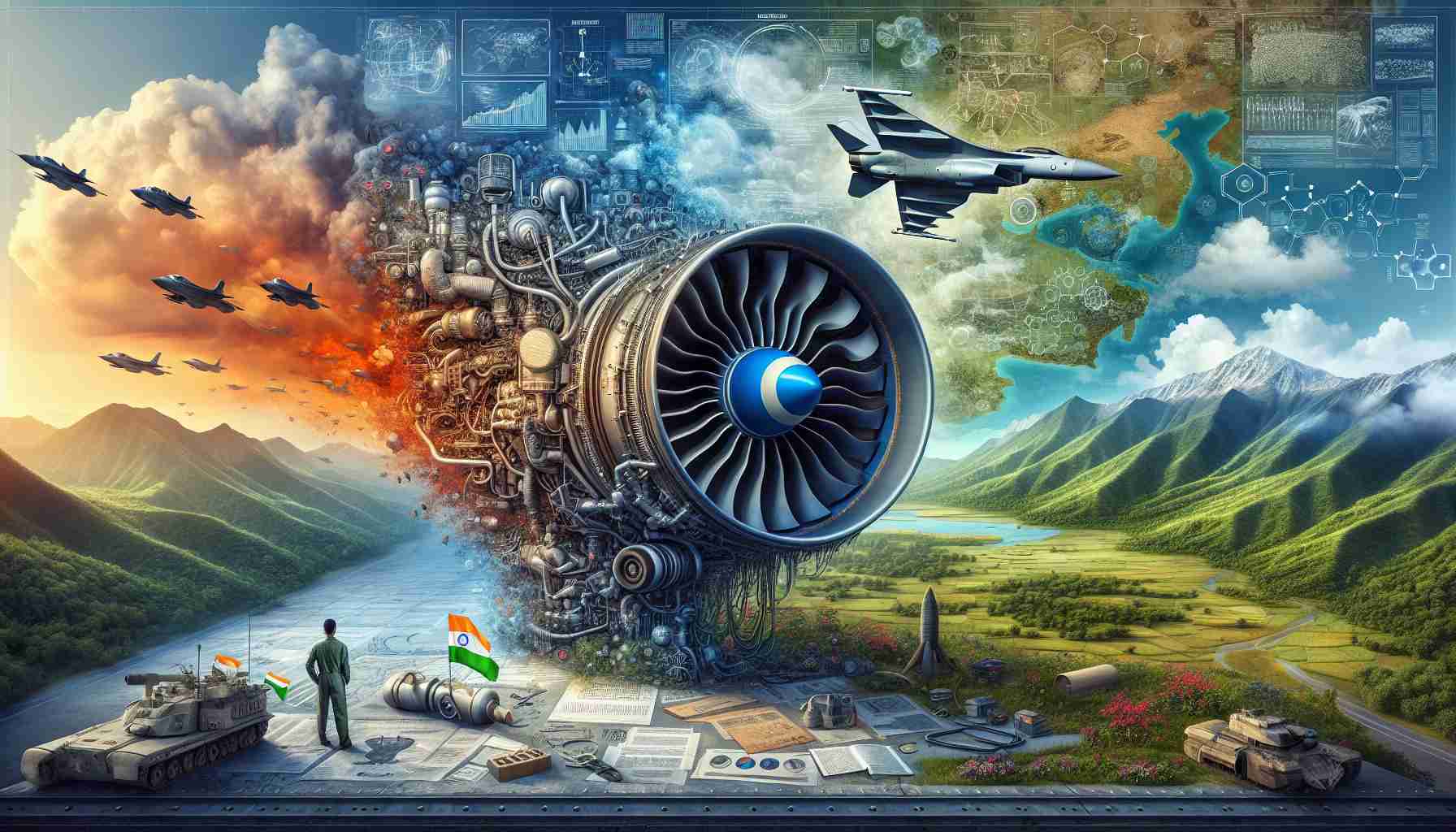In a surprising move, the Indian government announced plans to levy fines on General Electric Co. due to significant delays in delivering crucial jet engines meant for the nation’s light-combat aircraft. This decision stems from considerable setbacks in the supply schedule of engines powering the Indian Air Force’s Tejas Light Combat Aircraft Mk1 series.
Initially, the delivery of the F404 engines was set to begin in 2023, following a $716 million agreement between India’s state-owned Hindustan Aeronautics Ltd. and GE, signed in 2021. However, due to unforeseen delays, deliveries have been postponed until March 2025. These delays complicate India’s ambition to bolster domestic fighter jet production, amid rising regional tensions with neighboring countries.
This development coincides with efforts from both India and the USA to strengthen military cooperation. Notably, GE had previously entered into an agreement with Hindustan Aeronautics to produce next-generation engines for India’s future aerial combat endeavors.
Industry Challenges: GE Aerospace cited severe supply chain pressures affecting the global delivery of their jet engines. Although remaining tight-lipped about specifics, CEO Larry Culp identified 15 suppliers along the chain as sources of disruption, highlighting the broader challenges faced by the industry.
As India gradually retires its fleet of aging Soviet-era jets, it continues to diversify its military partnerships, though Russia remains a significant equipment provider, despite a slowdown in procurements due to international sanctions.
While the Indian Defense Ministry and Hindustan Aeronautics have refrained from commenting on the issue, observers are closely watching how these developments will impact India’s defense strategy and international relations.
How Global Supply Chain Disruptions Are Shaping the Future of Military Aviation
In the ever-evolving landscape of global defense, supply chain disruptions are emerging as a critical factor influencing military capabilities and international alliances. The recent delay in the delivery of jet engines from General Electric (GE) to India’s Hindustan Aeronautics Limited (HAL) reveals more than just a logistical hiccup—it underscores a broader challenge impacting communities and nations worldwide.
The Impact on Military Preparedness
The delayed delivery of the F404 engines for India’s Tejas Light Combat Aircraft Mk1 affects not just the immediate defense capabilities of the Indian Air Force but also the nation’s long-term strategic goals. With regional tensions simmering, particularly with neighboring countries like China and Pakistan, India’s need for a modern and responsive air force has never been more urgent. This setback emphasizes the complexity of military preparedness in a world where supply chains are interwoven and fragile.
Ripple Effects on Global Relationships
As India navigates its defense strategy, it also seeks to balance its international ties. The delay in jet engine deliveries could influence India’s defense procurement strategies, pushing it to explore alternate suppliers. This scenario presents a double-edged sword: while diversifying sources could lead to stronger defense, it might strain long-standing relationships, notably with countries like Russia.
India’s partnership with the United States is also in the spotlight. While GE and HAL strive to maintain their collaboration, the delays could test the resilience of this alliance. Such dynamics are crucial as nations strive for self-reliance in defense, illustrated by India’s “Make in India” initiative.
Community and Economic Impacts
Beyond defense strategies and international diplomacy, these supply chain disruptions have tangible impacts on communities. For instance, the production delays at GE potentially affect local economies dependent on the aerospace industry. Workers in manufacturing plants may face job insecurity, while lower-tier suppliers, forming part of the supply chain, might experience reduced demand, influencing livelihoods on a granular level.
Opportunities Amid Challenges
Interestingly, these challenges could catalyze innovation and adaptation. Nations might invest more in developing robust domestic production capabilities or exploring new technologies to circumvent supply chain bottlenecks. The situation could also lead to stronger regional cooperation in defense production, fostering an environment of shared technological advancement.
Advantages and Disadvantages
The current scenario offers numerous advantages, such as increased focus on self-reliance and innovation in military technology. By addressing supply chain vulnerabilities, nations can build more resilient infrastructures to support their defense sectors.
On the downside, the immediate challenge is heightened geopolitical tension and potential economic stress on industries tethered to defense production. Moreover, as countries look to diversify their defense suppliers, the ensuing competition could create an environment of mistrust among traditional allies.
Key Questions and Insights
– How can nations mitigate supply chain vulnerabilities in defense production?
Nations can foster local industries, invest in technology and innovation, and seek partnerships that solidify the resilience of supply chains.
– Will this delay affect India’s future defense procurement strategies?
Likely, as it highlights the risks of dependency on foreign suppliers and might lead to a recalibration of India’s defense procurement policy.
– What role can technology play in addressing these challenges?
Advanced technologies like AI, robotics, and 3D printing may offer solutions for on-demand production, minimizing reliance on conventional supply chains.
For more information on the defense industry, visit Janes or check out latest technological advancements on Defense News.







